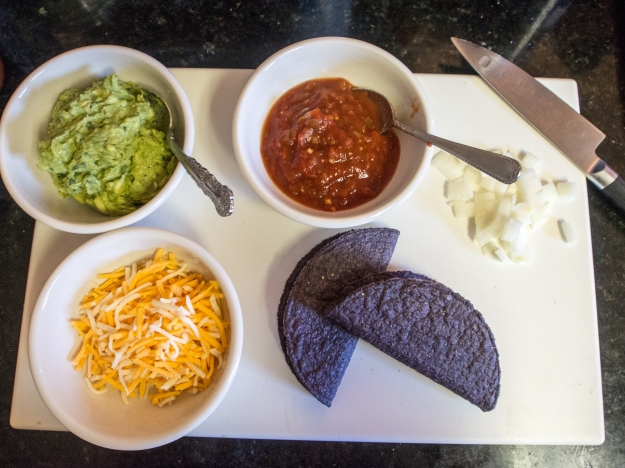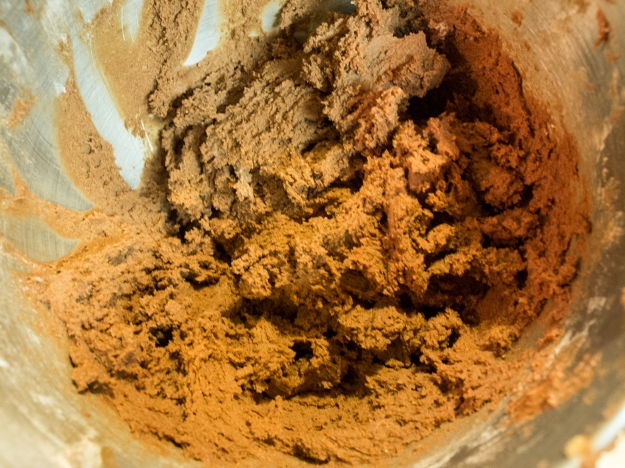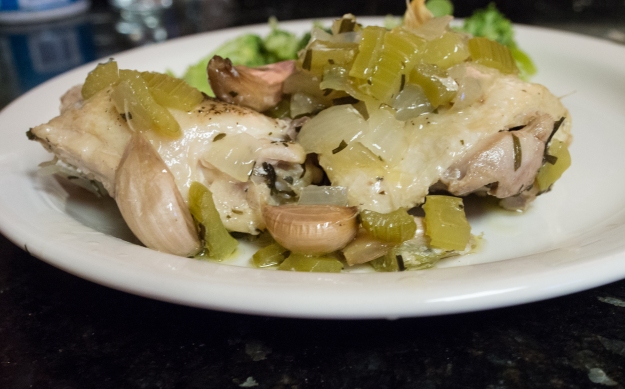
The humble taco. A big staple in my house growing up in the 70s and 80s. Ortega’s “dinner in a box”. Add some cheese and meat and dinner was served on crisp and crunchy shells. As a kid, taco night was the equivalent of going out to eat. It was fun to assemble your own food and you were eating something exotic, something Mexican.
Like many portable sandwich type items, tacos are thought to be invented by poor workers. In this case, silver miners in Mexico. Excerpted from Smithsonian.com:
Jeffrey M. Pilcher, professor of history at the University of Minnesota, has traveled around the world eating tacos. According to Dr. Pilcher, the origins of the taco are really unknown, but he thinks that it dates from the 18th century and the silver mines in Mexico, because in those mines the word “taco” referred to the little charges they would use to excavate the ore. These were pieces of paper that they would wrap around gunpowder and insert into the holes they carved in the rock face. For instance, a chicken taquito with a good hot sauce is really a lot like a stick of dynamite. The first references [to the taco] in any sort of archive or dictionary come from the end of the 19th century. And one of the first types of tacos described is called tacos de minero—miner’s tacos. So the taco is not necessarily this age-old cultural expression; it’s not a food that goes back to time immemorial. Read more: http://www.smithsonianmag.com/arts-culture/Where-Did-the-Taco-Come-From.html#ixzz2QfSTk512
It wasn’t long before Glenn Bell co-opted the taco and franchised it all over the United States. The key to the success of the taco franchise concept lay in the shell. Soft corn tortillas aren’t good for the long haul. They are very time sensitive. This works against the general franchise principles of longevity and shelf life. But when you fry the shell, the shelf life is extended. Thus, the taco with the crunchy u-shaped shell is born. Lasts longer, tastes better. As an aside, I haven’t eaten at Taco Bell in a very long time. I like beef to be “beef” and not 88% beef. However, I must say the dorito flavored taco shells are inspired. I loved doritos as a kid. While they are verboten now, it sounds awesome!
Back to taco night! My kids love taco night, just as much as I did. My picky daughter can make her taco with meat, taco shell and cheese. My son can load his up with all the fixings. My husband and I can keep low carb with a taco salad.
So, I wanted to have a simple dinner and picked up a packet of taco seasoning. Ortega, my childhood favorite (from http://www.ortega.com/products/products_detail.php?id=13126):
Ingredients
Yellow Corn Flour, Salt, Maltodextrin, Paprika, Spices, Modified Corn Starch, Sugar, Garlic Powder, Citric Acid, Autolyzed Yeast Extract, Natural Flavor, Caramel Color (sulfites).
I know what corn flour, salt, paprika, sugar, and garlic powder (isn’t that a spice?) are. If you can write “spices”, can’t you say what they are? Autolyzed yeast extract has MSG in it. Otherwise, I’m at a loss. For taco seasoning, shouldn’t seasonings be, I don’t know, greater than 4th on the list of ingredients?
Let’s try Old El Paso, another classic standby:
Maltodextrin, Salt, Pepper(s) Chili, Onion(s) Powder, Spice(s), Monosodium Glutamate, Corn Starch Modified, Corn Flour Yellow, Soybean(s) Oil With BHT Partially Hydrogenated To Protect Flavor, Silicon Dioxide Added To Prevent Caking, Flavor(s) Natural
Well, at least a spice was in the third position.
For the organics, Simply Organic (http://www.simplyorganic.com/products.php?cn=Southwest+Taco&ct=sosouth):
Organic Chili Pepper, Organic Maltodextrin, Organic Paprika, Sea Salt, Organic Garlic, Organic Onion, Organic Potato Starch, Organic Coriander, Organic Cumin, Silicon Dioxide, Citric Acid, Organic Cayenne.
The spice has moved up to number one, but maltodextrin (a sweetener), is a tad high for me, and it’s $1.50 for a little over 1 ounce. Ugh.
So, I made my own “taco” seasoning. I hesitated to write this entry because I don’t use corn starch as a thickener. I use tomato sauce, or tomato paste and water in a pinch. Whenever I have people over, they remark how really good the taco meat is and I don’t tell them my “secret” ingredient. The meat doesn’t particularly taste “tomato-y”. It honestly, just tastes like taco meat.
As with any recipe, feel free to adjust the seasonings to your particular taste. Try the meat when it’s done and adjust as necessary. Spices are fickle. My 12 month old club size container of cayenne may not be as spicy as your fresh from Penzey’s bag of cayenne. For such a spice heavy dish, all things are relative. Also, and I hate to get political, but I use organic corn shells. Genetically modified (GMO) corn scares me. It doesn’t die when you spray round up on it. GMO corn has caused a blight of round up resistant weeds and an increase in the amount of chemicals sprayed on the corn crops. Organic corn is supposed to be GMO free. The reality is with cross pollination, one can never be sure, but it’s better than definitely GMO.
Also, I used the following fixings, so I don’t really have a recipe for “sides” for this dish. I would love to say that I made the salsa and the guac, but my local Whole Foods did. It’s a weeknight and I work. I spent my time making the seasoned meat!!

Taco Meat
olive oil
2 pounds ground beef (turkey or chicken are ok too)
2 1/2 tablespoons of a mild red pepper powder (Ancho, Paprika, etc.)
1 tablespoon ground cumin
1 teaspoon garlic powder
1 teaspoon onion powder
1 teaspoon dried oregano (crushed)
1/4 teaspoon smoked paprika (optional)
8 ounces tomato sauce
Salt and Pepper to taste
In a saute pan (I used a 3 quart), heat olive oil over medium heat. Add ground beef and brown. Drain the beef, if there is a lot of liquid. To the browned beef, add each of the spices and heat until fragrant. Add the tomato sauce and stir well. Taste, adjust seasonings as necessary.
You can either place the meat in an oven warmed taco shell (see package directions):

Or on a bed of leafy greens:























































